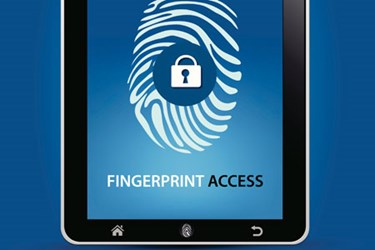Biometrics Update 2014
By Megan Williams, contributing writer

We’ve brought you the status of biometrics in healthcare before, but that was quite a while ago and a lot has changed. Back then, biometrics was a very expensive solution and fingerprint recognition dominated the market.
Where are things in 2014? Today, we’re taking a look.
Patient Applications
Earlier this month, Archibold Memorial Hospital deployed the iris biometric system. The system is designed to prevent mix-ups, stop patient identity fraud, eliminate the creation of duplicate medical records, and reduce billing errors. Patients are registered when they arrive for an appointment and iris details are captured. If a patient has visited the system before, they are automatically matched with their medical information in less than a minute.
The Market
According to a new report from Research And Markets, the biometrics market overall expects to see a growth rate of 10.59 percent between 2014 and 2018. Much of that is heavily driven by voice biometric technology.
Going Mobile
Hitachi, Ltd., has integrated biometrics with its mobile healthcare solutions, according to Hospital Healthcare. Their ‘BIOMIG’ device, based on their finger vein authentication technology, has been rolled out at several private hospitals. The technology is meant to help combat abuse and inefficiencies in the existing payment system. The biometric solution is used by patients at the point of service, and incorporates Wi-Fi scanners that allow for easy mobile identification for the patient at point of care.
Integration With EHRs
LifeMed ID has implemented their biometrics solution at Mid Coast Health Services in Brunswick, ME. It automates access operations, eliminates duplicate record making, and ties patients to their health records. The solution, which is HIPAA compliant, uses multiple devices to keep patients tied to their EHR and allows for the use of everything from driver licenses, smart cards, facial recognition, iris biometrics, and palm vein scanning.
After implementation, the facility saw a decrease in registration time from four minutes to one.
The Future
Expect to see more integration of biometrics with wearable technology and telemedicine in the future. Companies like MediSafe are positioning themselves to take advantage of the telehealth benefits that wearables bring with them, in the hopes of using products like smartwatches as a platform for reminding wearers when to take their medication and record how much was actually taken.
Back in the world of EHRs, companies like miGlass have released apps designed for Google Glass that allow clinicians immediate access to patient medical records in real time, giving them access to integral information like blood type and allergies.
Want to stay up to date on advancements in healthcare that are opening doors for biometrics applications? Subscribe to our newsletter at the right.
